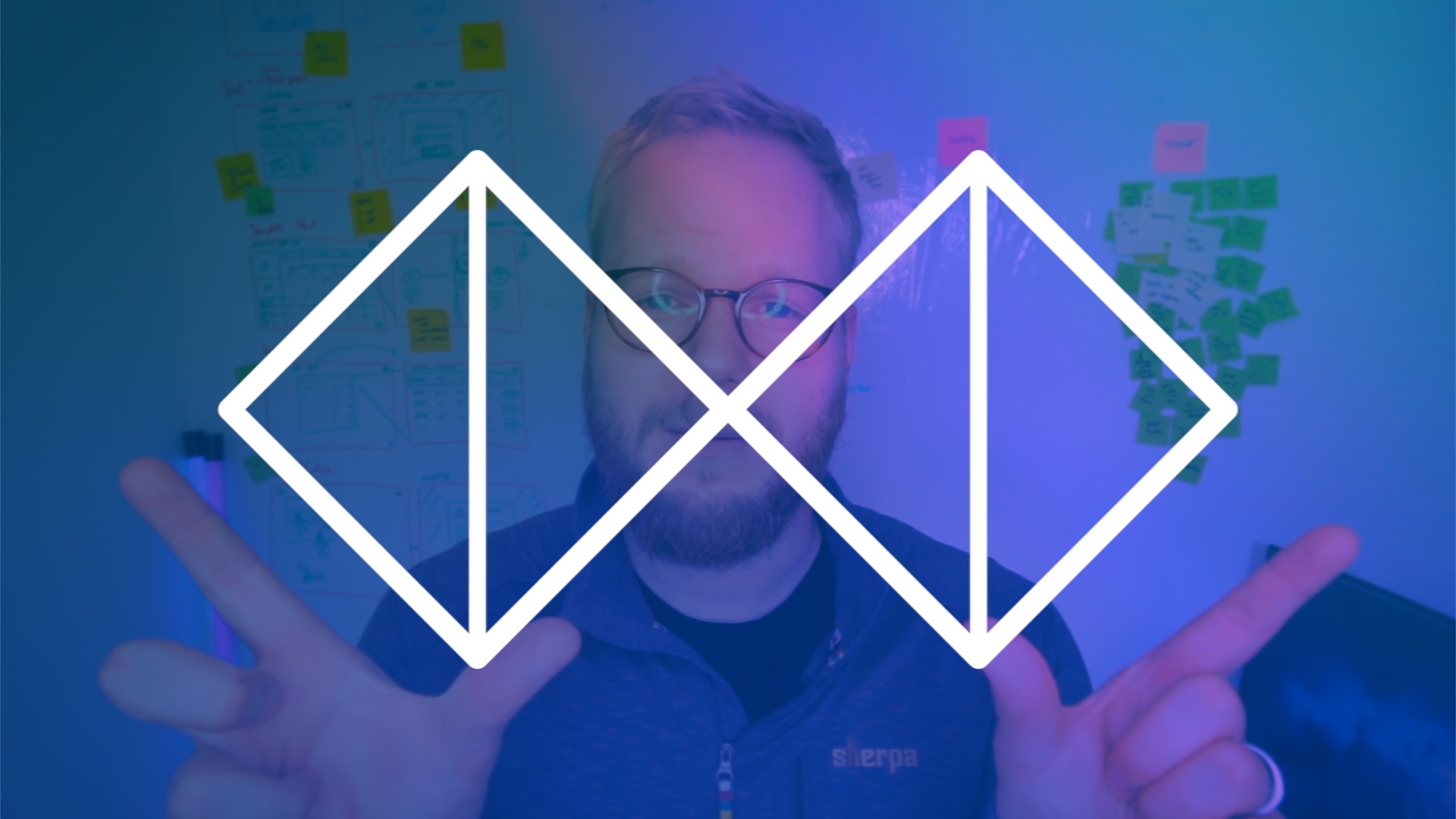A viewer of my YouTube channel recently asked me:
Can you please explain double diamond theory?
Gladly. The UX double diamond is a great framework for designers that can tell you how to handle any UX project. Solving a problem as a designer is, in a lot of ways, about making something out of nothing: you’ll have an initial sense of the business problem, and from that vague idea, your job is to figure out an appropriate solution that’s valuable to the end-user and therefore to the business that’s paying you.
Let’s break down this framework, why use it and how it improves your design process.
What is the UX double diamond?
It’s a framework that illustrates how we as designers approach problem-solving. It codifies how projects usually go naturally: you start at a point where you have little idea or certainty about the right solution, and you end with a solution and high certainty it works.
And so the first diamond encapsulates how to discover the right thing to design, and the second diamond describes how to design that thing right, meaning that we need to optimise the overlap between satisfying end user’s needs and the business need. Designing the right thing + designing it right = quality user experiences.
Diverging and converging
We start with a (business) problem. Whether it’s vague or defined in detailed, our first job is to research it further. We diverge from that initial problem by doing secondary research, running stakeholder workshops and user research activities. We reach the peak of the first diamond.
From here, we identify themes and as we start to identify which ones have more value than others in solving our problem, we narrow down or converge to what X needs to be solved for.
We then cross the chasm and start the second diamond. By this point we have to involve the product team (if we didn’t already) and we diverge again as we ideate possible solutions (e.g. by asking “how might we achieve X”), new experiences or new user touch-points within an existing product.
Finally we converge again by prioritising what is most valuable (and feasible) into an end solution. We might create high-fidelity Axure prototypes to test with users or we might go into development and use A/B testing to validate the quality of our solution.
This diverging and converging captures the unique thinking of UX designers and the value they bring to a business.
Using the UX double diamond day-to-day
To deliver quality UX
As a mnemonic, the UX double diamond tells you how broad your vision should be at any point in a project. It reminds you to always start from the problem, even if your business stakeholder already thinks they know what the solution should be. It tells you when in the project you should diverge, branch your focus out, try things vs when you should laser in, converge and connect the dots.
If you’re new to UX design, don’t worry if you don’t have a good handle on this framework yet. It’ll come with practice. After all, this framework codifies what many designers already do naturally when faced with a problem: they get curious about it first.
To communicate with anyone
Frameworks like the double diamond help you communicate your design process in a concise and clear way, whether you’re talking to your product team, the wider business or you’re interviewing for a job.
As a manager who has interviewed many designers, it’s alarming how many can’t describe their UX process briefly or at all in a way that makes sense to others.
Stand out from the rest
In summary
Using the UX double diamond won’t just make a better designer but also a design leader. Being able to communicate clearly why you’re doing what you’re doing and how this will create value for the business (because let’s be real—oftentimes, you’re the only one who cares about the end-user) will help you stand out.
Recommended further posts:
What is Design Thinking and How to Use It?
The difference between UX, Design Thinking and Design Sprints
